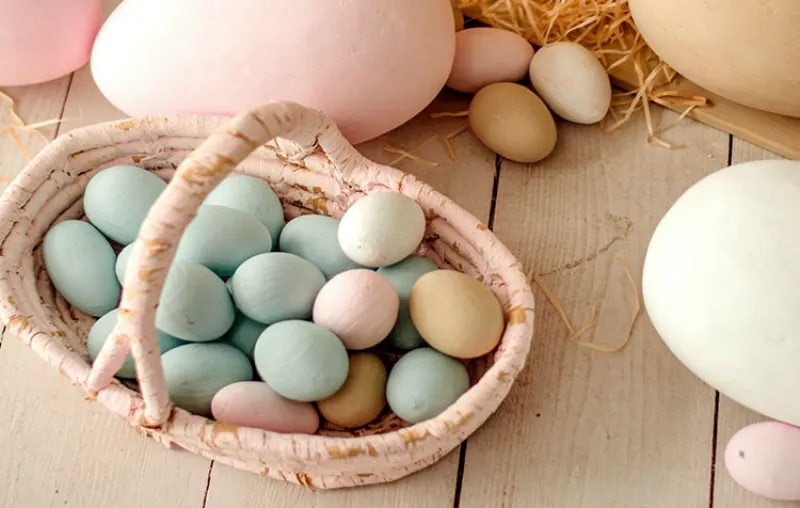You want Harmful substances in baby clothing and learn exactly what to look for when buying? Then you've come to the right place. I think we all agree that there should be no harmful substances in children's clothing. But since this is unfortunately still the case, it is important to take a close look at the offers on the Internet and fashion stores.
In this article, I'm going to give you 5 tips to look out for when buying baby clothes if you care about them being free of harmful substances and not unnecessarily polluting the environment in the production process.
Baby clothes free of harmful substances - 5 tips that you can consider when buying
What harmful substances are in our clothing and how dangerous are they for my child? This is a question many parents ask themselves when the first offspring is announced. At the latest when it comes to the initial outfitting in the form of bodysuits, rompers and the like, you will find that the selection on the market is huge and there are also large price differences in the area of baby clothing. However, the question as to what extent there is a connection between price and quality often remains unanswered.
There are so many reasons to get to the bottom of the answer. The skin of a baby is very different from the skin of us adults. It is much more sensitive and reacts sensitively to physical and microbial influences. The main reason for this is the thickness of the skin. It is only one fifth as thick as that of an adult person and the protective layer of sebaceous and sweat glands is only weakly developed. All this makes baby skin more receptive to chemicals that may be present in cosmetics and textiles.
Therefore, use the following reasons and tips to buy only healthy and environmentally friendly children's clothing. Let's go!
1. the quality of the raw material (usually cotton)

In conventional agriculture, pesticides are used as a matter of course to protect cotton from pests and weeds. The pesticides used for this Chemicals can also be detected in the end product (i.e. T-shirt). Therefore, pay attention to the quality of the raw materials. Is the T-shirt made of 100% organic cotton?
2. how much was the baby clothes aftertreated?
This is referred to as chemical auxiliaries and finishing agents. To improve dimensional stability, weather resistance or other additional benefits, the textile industry uses chemicals such as Formaldehyde used. Toxic chemicals are also used in the so-called "used look". So when choosing clothes, it helps to follow the principle "less is more natural".
A normal cotton shirt is more transparent and easier to trace. Clothing made of different compositions and with a large "added value", on the other hand, may contain chemicals that are not apparent at first glance.
Tip: At Slow Fashion Tips Christoph gives you detailed advice for a fundamentally sustainable approach to fashion.
3. what matters is the color
Colors in textiles pose the greatest health risk. In addition, the Dyeing process very harmful to the environment. The pictures of pink or green rivers from Bangladesh or other production countries have certainly seen most of you in a documentary. Here, a lot happens in the background and the production chains can often (very often) not be transparently traced.
Especially dark colors like blue and black are to be seen critically. They can due to the pollutant aniline, Allergies trigger. Strongly colored baby clothes (especially dark colors) are therefore not recommended if you want to be on the safe side.
4. well-known eco-seals promise a piece of security

It is not easy or even impossible to exclude all risk factors when buying baby clothes. For the normal consumer, it is impossible to trace the supply chain. Worldwide standards such as the so-called Global Organic Textile Standard (GOTS for short) closely examine the supply chains and set strict benchmarks in terms of fairness, environmental friendliness and pollution. Products with the GOTS seal or other recognized textile seals (e.g. IVN Natural Textile) therefore give you confidence in your purchase.
5. second hand baby clothes
New organic certified baby clothing is often quite a price-gouging venture. The quality of the raw materials and the strict inspection of the supply chain also certainly justify the higher price, because a fair shirt must also be paid fairly. A low cost alternativeAnother option that is just as sustainable is second-hand baby clothes. Often churches, kindergartens or communities organize flea markets with baby things.
You can also "pass around" the children's clothes among friends. The advantage: The baby clothes have already been washed umpteen times, so there are no residues of chemicals in the clothes and you can put them on your little darling with confidence.
Avoid harmful substances in baby clothes!

If you let these 5 facts melt on your tongue, it is probably important for everyone to buy certified, healthy fashion for babies and toddlers. Once you have found your way through the jungle of seals and certificates, it is no longer difficult to find sustainable and ecological children's fashion. With every ecological clothing purchase you do something really good for you, your child and our environment.
Do you have any questions or suggestions about this article on harmful substances in baby clothes? Then just write me a comment under this post.
Many greetings,

PS.: Look you with pleasure still further in the sustainable family blog of CareElite. There you will learn, for example, whether it makes sense, not having children for environmental reasons.






